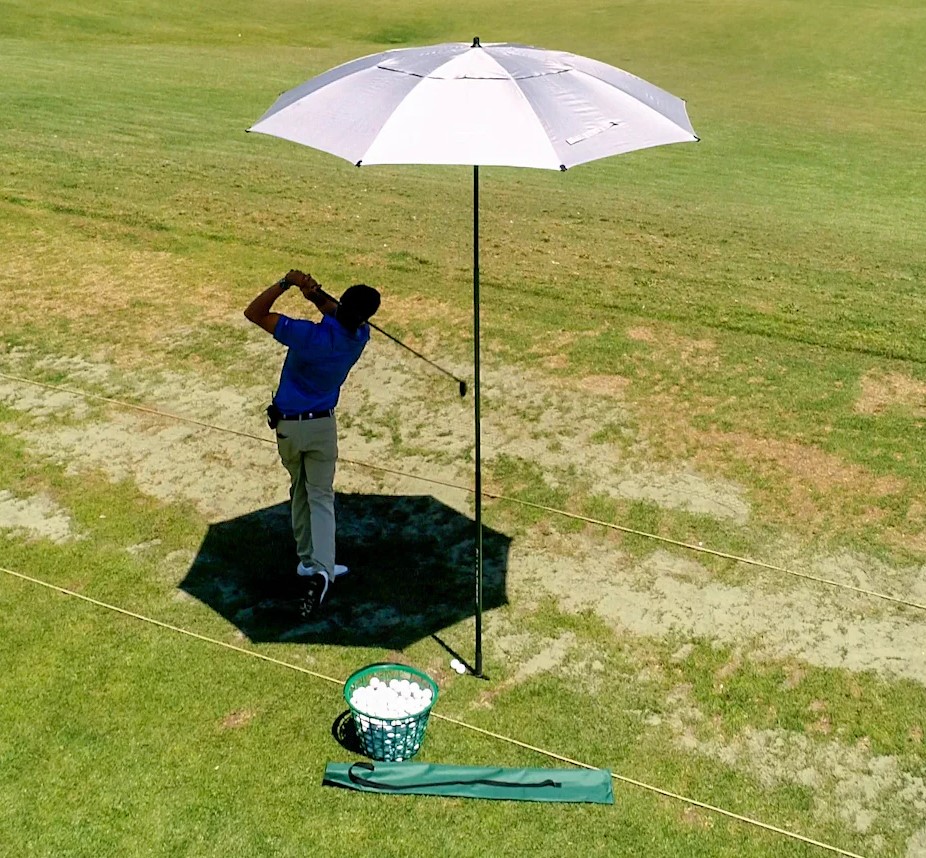When you’re out on the golf course, dealing with unexpected rain or scorching sun, a standard umbrella won’t cut it. You need something reliable, something that can handle whatever the weather throws at you. That’s where a golf umbrella comes in. It’s not just big for the sake of being big—it’s designed to give you full coverage when you need it most.
These umbrellas are more than just oversized. They’re built specifically for golfers, offering a blend of size, strength, and ease of use. Let’s get into how that extra coverage makes all the difference.
Size and Coverage
| Feature | Details |
|---|---|
| Typical Diameter | 60 to 68 inches |
| Length When Closed | 40 to 50 inches |
| Weight | 1.3 to 2 pounds |
| Canopy Structure | Single or Double Canopy |
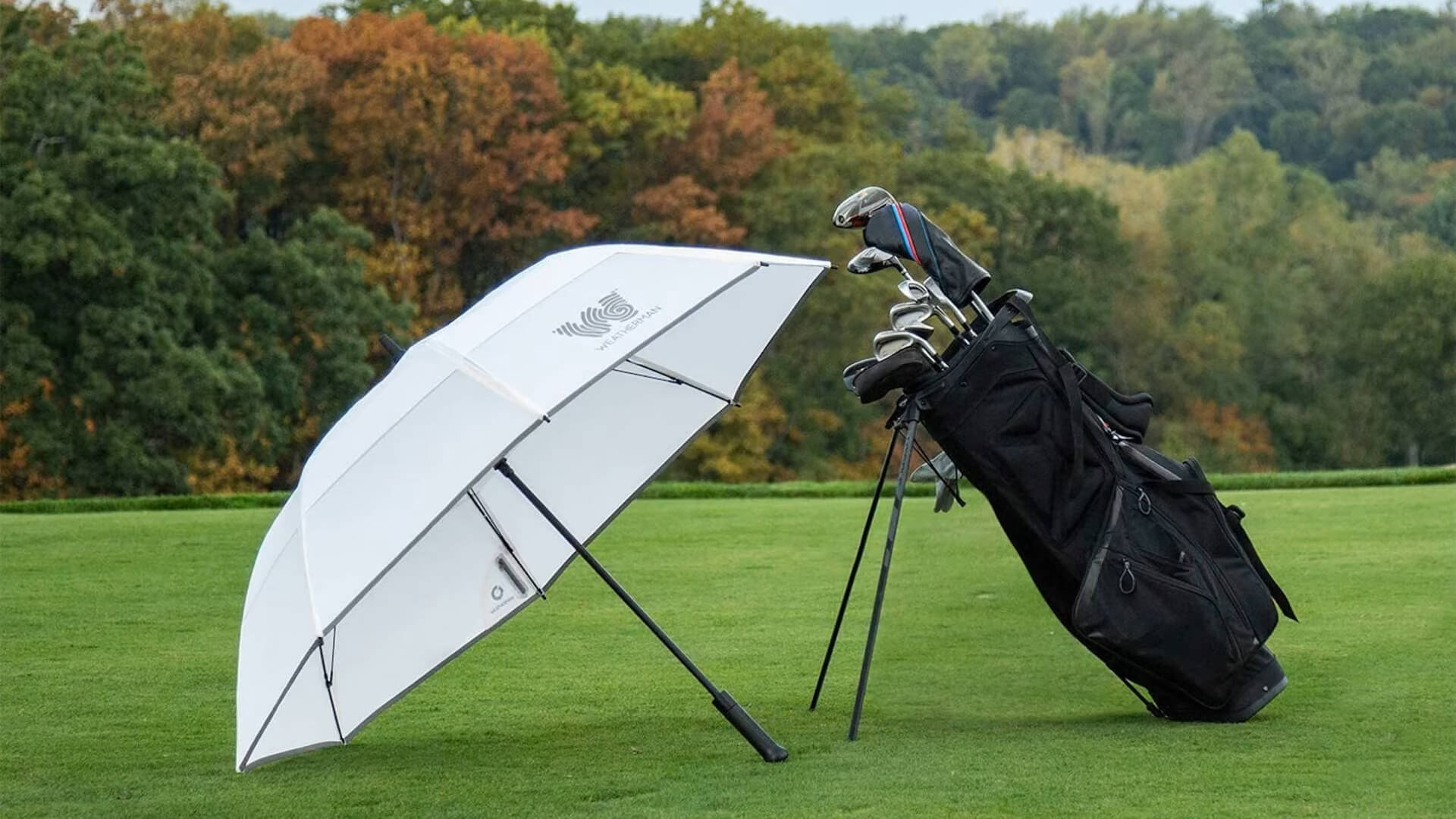
Golf umbrellas are built for one main purpose: maximum coverage. The diameter of these umbrellas typically ranges between 60 to 68 inches, ensuring you stay fully protected from rain or harsh sunlight. This large canopy is essential not only for shielding yourself but also for covering your golf bag and equipment.
When closed, these umbrellas are around 40 to 50 inches in length, which makes them easy enough to carry while offering substantial coverage when opened. Despite their size, golf umbrellas are relatively lightweight, usually weighing between 1.3 to 2 pounds. The canopy structure can be either single or double, with the latter offering better wind resistance by allowing air to pass through vents.
Diameter Variations
| Size Category | Diameter (Inches) |
|---|---|
| Standard | 60 to 62 inches |
| Large | 64 to 68 inches |
| Extra-Large | Up to 70 inches |
Golf umbrellas come in various diameters, typically ranging from 60 to 68 inches, with some models reaching up to 70 inches for those who need more coverage. The size you choose depends on the level of protection you need and whether you’re also covering your golf bag or sharing it with a partner.
A standard golf umbrella, measuring between 60 to 62 inches, is already larger than regular umbrellas and offers ample coverage for most golfers. Larger sizes, like 64 to 68 inches, provide even more coverage, ideal for those who prefer extra room. The largest options, stretching up to 70 inches, ensure full protection in heavy rain or intense sunlight.
The bigger the diameter, the more ground it covers, but this can also mean more weight and less portability. Finding the right balance between size and convenience is key when choosing a golf umbrella.
Length and Portability
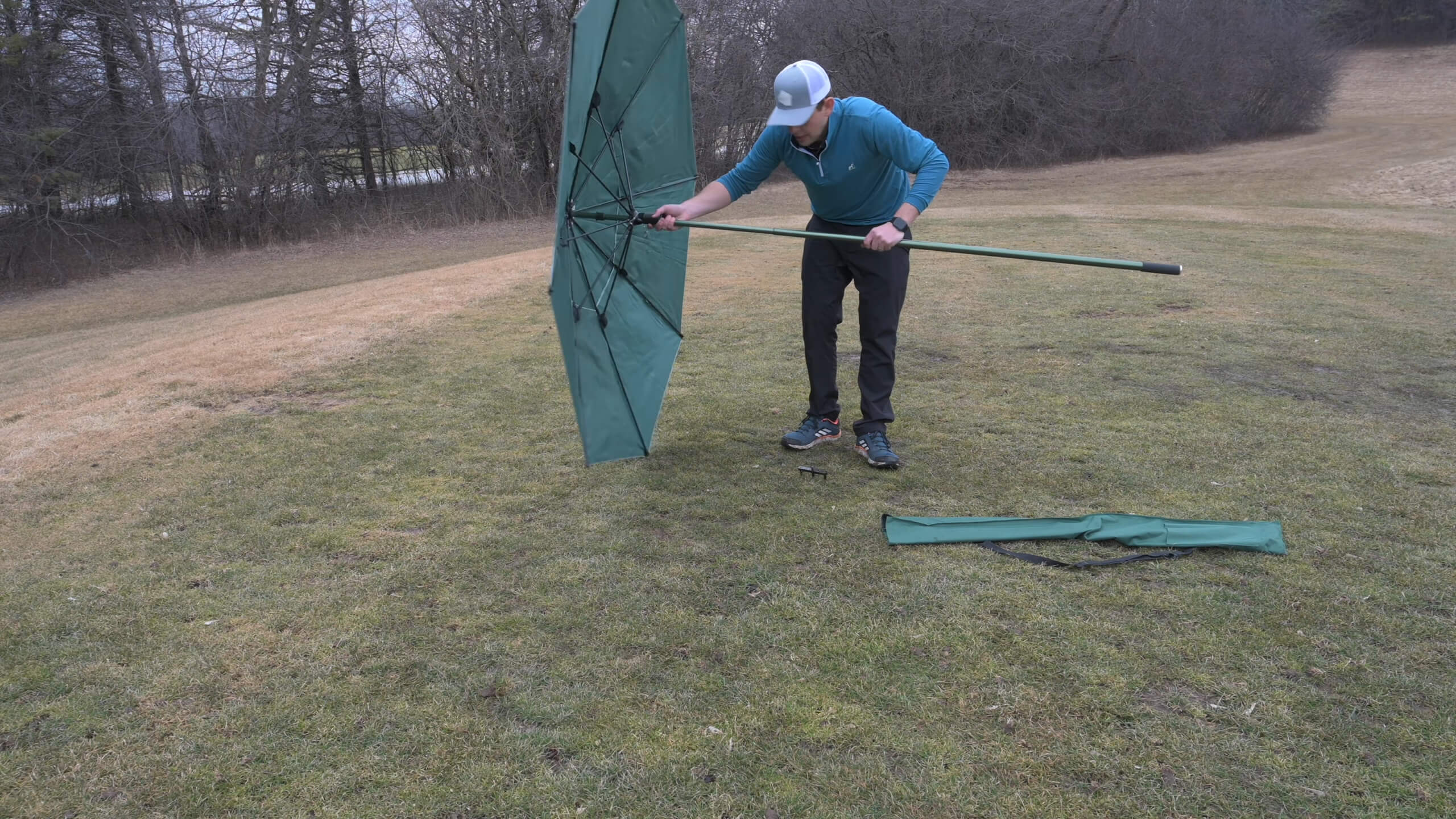
| Feature | Length (Inches) |
|---|---|
| Standard Length | 40 to 50 inches |
| Extra-Long Length | Up to 70 inches |
| Portability Factor | Lightweight and Foldable |
The length of a golf umbrella plays a crucial role in its ease of use and portability. Typically, these umbrellas measure between 40 to 50 inches when closed, making them easy to carry while still offering substantial coverage when opened. Some models, especially those designed for extra coverage, can stretch up to 70 inches in length.
Despite their size, golf umbrellas are usually lightweight, thanks to materials like fiberglass used in the frames. This makes them easy to carry along the course or store in your golf bag. Portability is further enhanced in models that feature foldable designs, allowing the umbrella to collapse into a compact form, ready for easy transport.
Choosing the right length is all about balancing coverage with convenience. A longer umbrella might offer better protection but could be less practical to carry around. Look for a model that suits your needs, whether you prioritize portability or maximum coverage.
Importance of Canopy Design
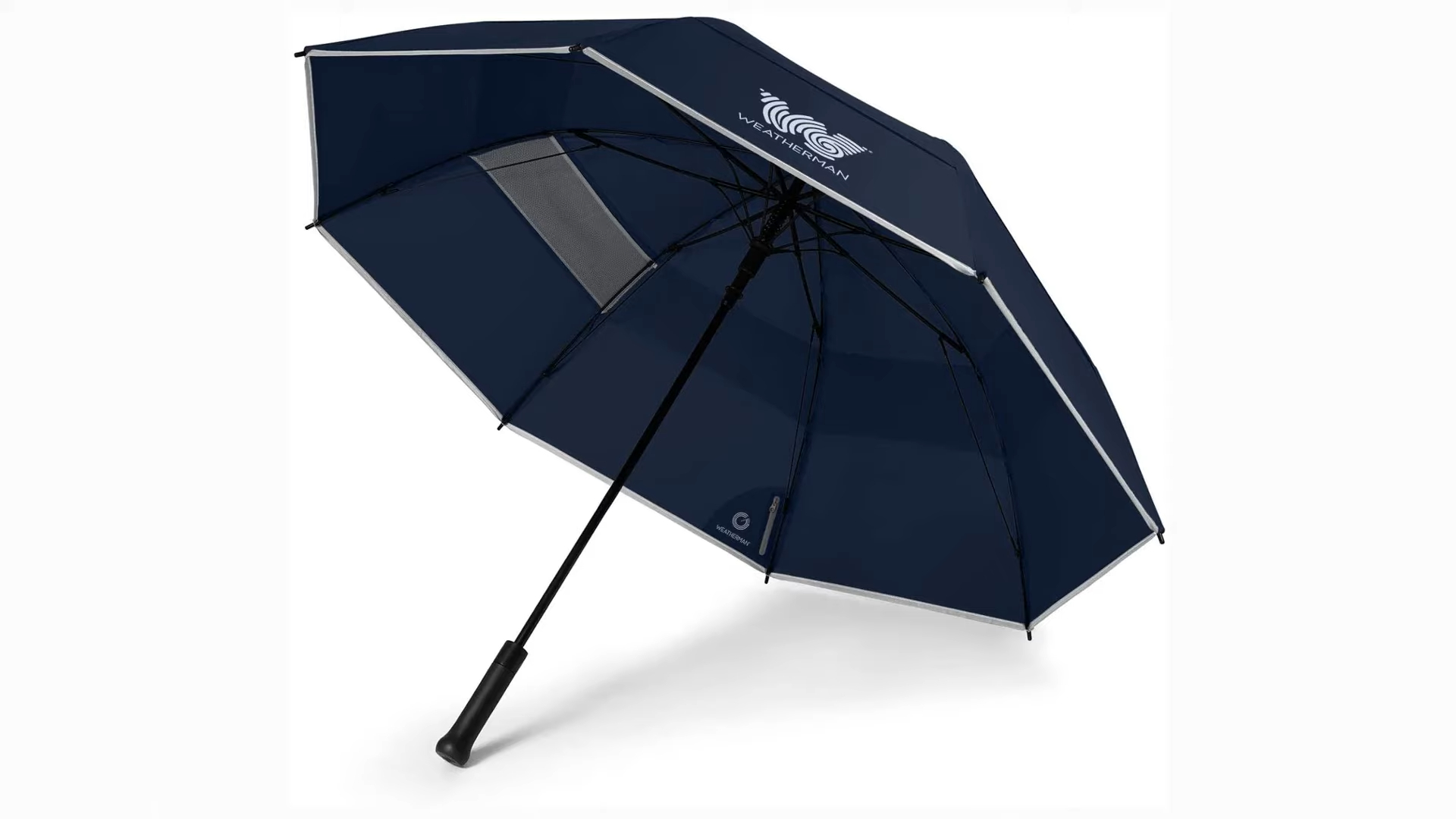
| Canopy Type | Features |
|---|---|
| Single Canopy | Basic coverage, lighter |
| Double Canopy | Better wind resistance |
| Vented Canopy | Allows airflow to prevent inversion |
The canopy design of a golf umbrella directly impacts how well it performs in different weather conditions. Most golf umbrellas feature either a single or double canopy structure.
A single canopy design is more common and generally lighter. It provides basic coverage but may struggle in windy conditions, where the risk of inversion is higher.
A double canopy design is favored for its ability to handle strong winds. It includes an outer layer with small vents, allowing air to pass through while maintaining stability. This feature significantly reduces the chance of the umbrella flipping inside out, making it ideal for golfers facing unpredictable weather on open courses.
Additionally, some umbrellas incorporate a vented canopy that further enhances wind resistance by channeling air through dedicated vents, offering a balance between coverage and durability.
Wind Resistance
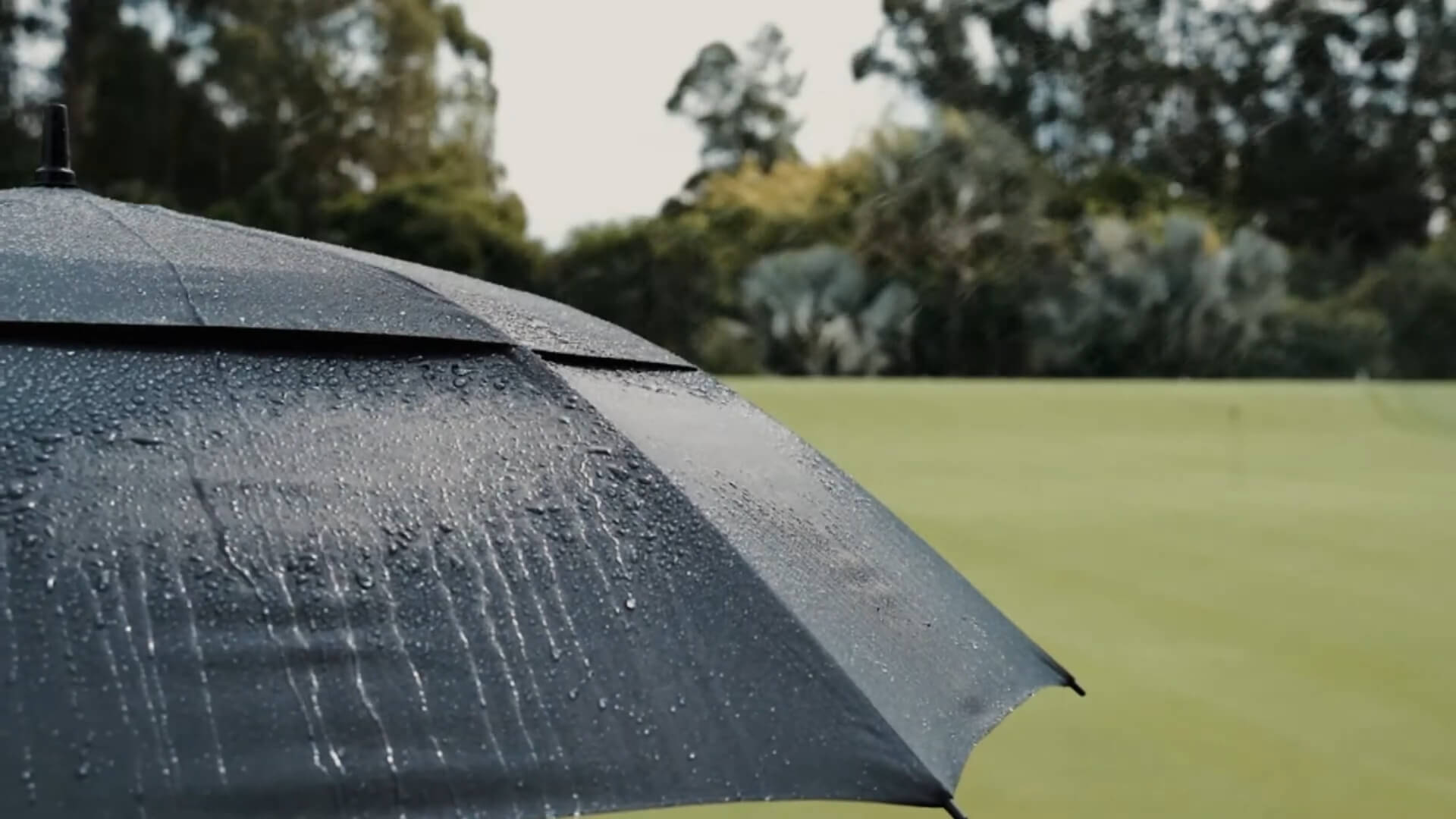
| Feature | Description |
|---|---|
| Double Canopy | Allows wind to pass through |
| Reinforced Frame | Sturdy structure to prevent flipping |
| Vented Canopy | Reduces pressure in strong gusts |
Wind resistance is a critical feature in golf umbrellas, as open golf courses often expose players to strong winds. The double canopy design is the most effective solution for maintaining stability in such conditions. It incorporates two layers, with the outer one vented, allowing wind to pass through instead of catching and flipping the umbrella.
In addition to the canopy, the reinforced frame plays a crucial role. Many high-quality golf umbrellas use fiberglass frames, which are both lightweight and flexible, helping the umbrella withstand heavy gusts without breaking or inverting.
The vented canopy design, common in double canopy models, specifically reduces the chance of inversion by relieving wind pressure. These features ensure that the umbrella remains steady, even in challenging conditions.
How to Choose the Right Golf Umbrella?
| Consideration | Key Points |
|---|---|
| Coverage Needs | Balance size with portability |
| Wind Resistance | Opt for double canopy or vented |
| Material and Durability | Lightweight yet sturdy |
If you’re often dealing with strong winds, a double canopy or vented canopy is essential. These features ensure stability by letting wind pass through without flipping the umbrella.
For coverage, it’s important to choose the right size based on how much protection you need. Larger umbrellas, typically around 68 inches in diameter, provide better coverage but may be harder to carry. Consider whether you’re primarily walking the course or using a cart, as this affects how portable you need your umbrella to be.
Materials also matter. High-quality golf umbrellas often feature fiberglass frames, which offer a mix of lightweight design and durability. The canopy itself should be made of water-resistant or waterproof material like nylon or polyester to handle rain effectively.
FAQs
How heavy is a golf umbrella?
Golf umbrellas typically weigh between 1.3 to 2 pounds, depending on the size and materials used. Despite their large size, they are often made with lightweight materials like fiberglass to maintain portability and ease of use.
What is the difference between a single and double canopy golf umbrella?
A single canopy umbrella has one layer of fabric, which is lighter but less wind-resistant. A double canopy design includes two layers with vents, allowing wind to pass through and reducing the chance of inversion in strong winds.
Are golf umbrellas waterproof?
Yes, most golf umbrellas are made with water-resistant or waterproof materials like nylon or polyester. These materials are designed to keep you dry in heavy rain and protect your equipment.
Do golf umbrellas have UV protection?
Many golf umbrellas are designed with UV-blocking fabrics, providing additional sun protection during sunny rounds. This feature is especially useful for extended exposure on the course.
Can I use a regular umbrella instead of a golf umbrella?
While you can use a regular umbrella, it’s not recommended for golf. Regular umbrellas are smaller and less durable, offering limited coverage and poor wind resistance compared to golf umbrellas.
What materials are golf umbrellas made from?
Golf umbrellas are usually made with durable materials like fiberglass for the frame and polyester or nylon for the canopy. These materials are lightweight, water-resistant, and built to withstand tough weather conditions.
How do I choose the best golf umbrella?
When choosing a golf umbrella, consider size, wind resistance, material, and portability. Opt for a double canopy for windy conditions and ensure the size provides adequate coverage without being too heavy or cumbersome.
Conclusion
Golf umbrellas are designed with purpose, offering more than just size. They give essential coverage for both you and your gear, especially in unpredictable weather. With the right size and features like double canopies and reinforced frames, a golf umbrella ensures you stay protected from rain, wind, and sun.

